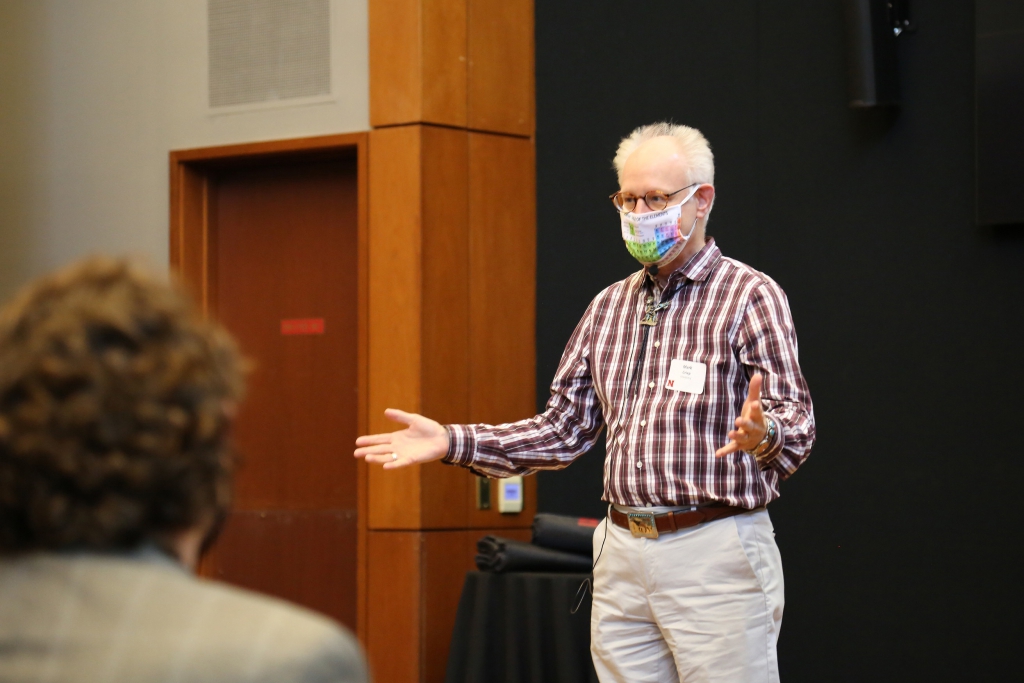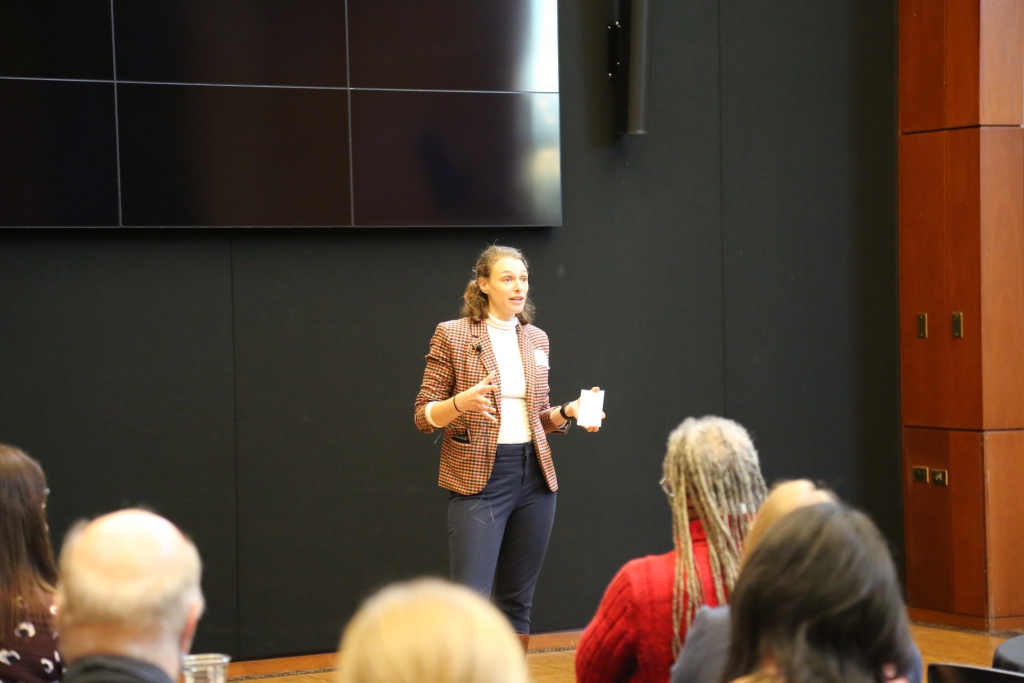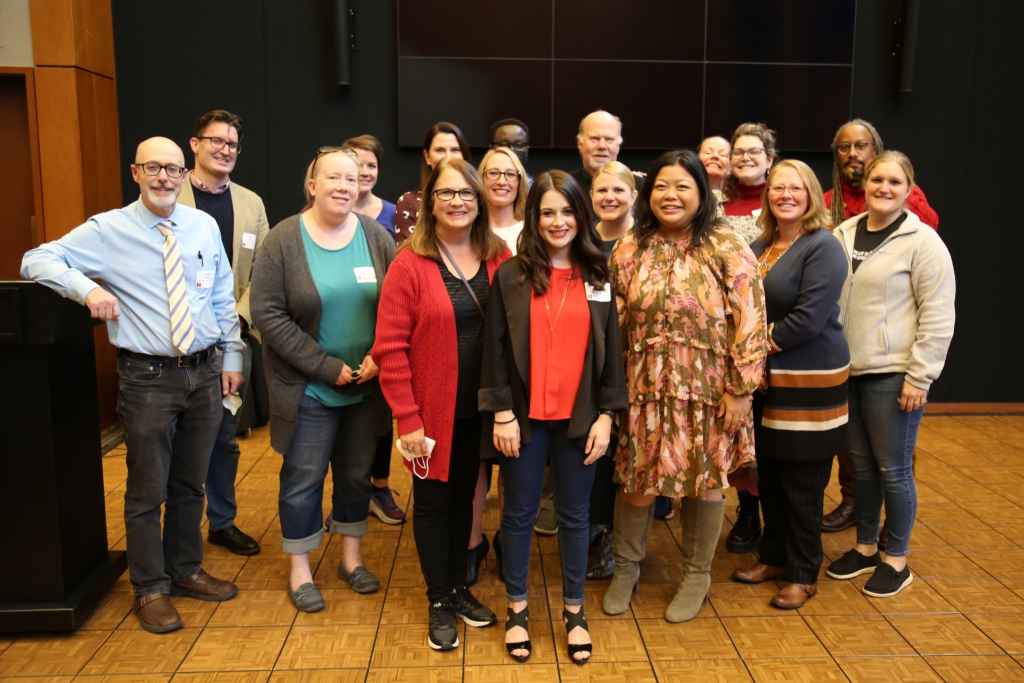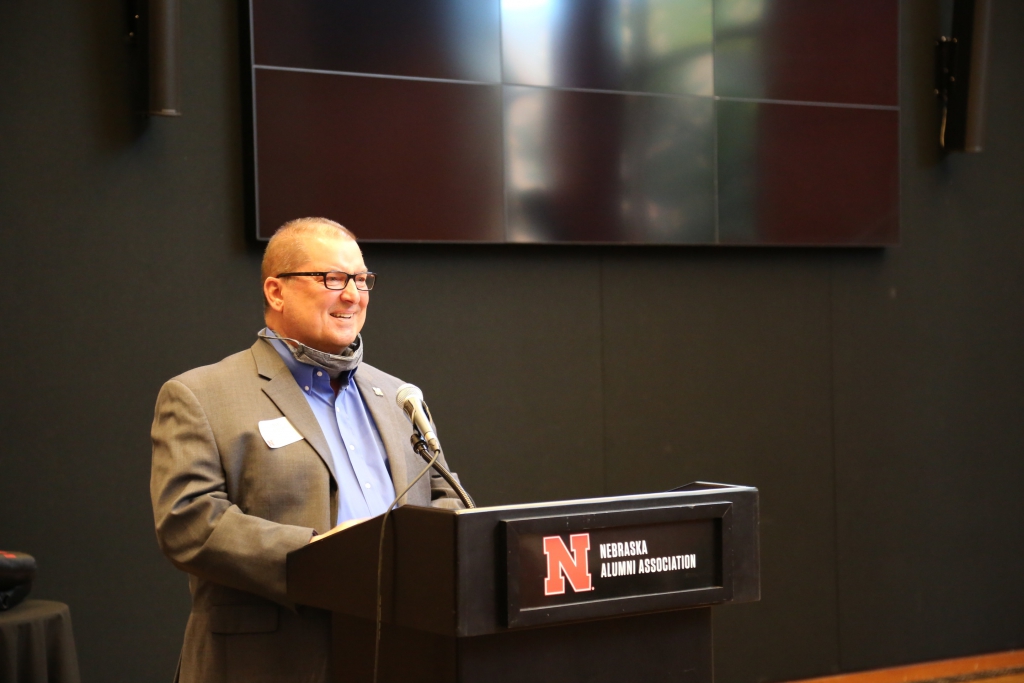Dan Moser, November 3, 2021
Kirkpatrick wins Slam with call for collaboration between communicators, scientists
No berets or bongos were in evidence for this slam, but Nebraska faculty kept the beat anyway as they described how their work is addressing the university’s Grand Challenges.
Ciera Kirkpatrick, assistant professor of advertising and public relations, won the $1,000 first-place prize at the fourth annual Faculty Research and Creative Activity Slam on Nov. 3, cheered on by a group of colleagues from the College of Journalism and Mass Communications. Other participants were Mark Griep, professor of chemistry, and Sarah Zuckerman, assistant professor of educational administration.
The Slam, part of the university’s Research Days celebration this week, charged slammers with answering this question: “In what ways does your research, scholarship or creative activity connect with one or more of UNL’s Grand Challenge themes?” They had to do so in five minutes or less and without PowerPoint, and all came in under the time limit – an impressive feat of restraint for faculty members, noted Jocelyn Bosley, research impact coordinator and facilitator.
Kirkpatrick, who just joined the faculty this fall, has focused her research in part on how communication can be strategically designed to increase enrollment of underrepresented populations in clinical trials of prescription drugs, fitting into the health equity theme. Her talk was titled “Mass Media’s Effects on Health and How Strategic Communication Can Aid in Achieving Health Equity.”




Diversity in drug trials is key because not all populations are affected the same by drugs, yet trials have tended to be dominated by white male subjects, she said.
Blacks can be particularly hesitant to participate in drug trials because of the country’s tragic history in exploiting them in medical experimentation.
“Messaging in the media can be strategically designed to overcome this,” Kirkpatrick said. If specific populations see people like them in recruitment materials, they’re more likely to volunteer themselves.
She called for greater collaboration between strategic communicators and scientists.
Griep is looking for a few good partners, inside and outside the university, to advance STEM literacy. He recounted his own love affair with science, which began in middle school, and has only grown.
He’s looking to create networks across the state that would explore local issues and tie them into broader, universal science themes, showing citizens how science affects their lives – critical to enacting the theme of science and technology literacy for society.
His talk included a plea for help from colleagues.
“Please join me in surrounding the citizens of Nebraska with science,” Griep said.
Zuckerman also is looking to create networks. A former special education teacher in grades pre-K through third in high-needs rural and urban school, she praised Nebraska’s educational system but said there are gaps, especially with schools that serve economically disadvantaged populations.
“We haven’t always made connections between ourselves and people.”
Collaboration, coordination and cooperation among schools and community leaders is essential to achieving educational equity for all Nebraska schoolchildren, Zuckerman said.
Her research is part of the early childhood education and development aim of the grand challenges initiative.
The University of Nebraska-Lincoln has identified seven Grand Challenge thematic areas in which to focus its expertise and resources, as outlined in the N2025 Strategic Plan. In addition to the themes covered by the slammers, others are anti-racism and racial equity, climate resilience, quantum science and engineering, and sustainable food and water security.
Now, faculty are charged with imagining how their areas of research, scholarship, creative activity and outreach intersect with these challenges and what specific opportunities within these areas they could work across disciplines to help solve. The Chancellor’s Office and the Office of Research and Economic Development have committed $40 million over four years to invest in strategic, goal-based solutions.





